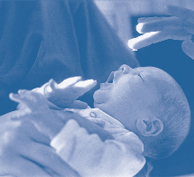Intraocular lenses for babies carry risks
|
|
It’s not an easy feat to put a contact lens in a baby’s eye but a necessary one for parents of infants who have undergone cataract removal surgery and need a replacement lens.
A cataract clouds the eye’s natural lens and prevents the eye from focusing. Without a replacement lens following surgery, a baby’s eye would lose its ability to see.
Contact lenses usually are recommended for babies, but for school-age children who develop a cataract, an intraocular lens (IOL) is implanted into the eye because it offers better visual sharpness. IOLs, though, carry a higher rate of complications, and for that reason, ophthalmologists typically don’t use them for infants.
But Emory ophthalmologist Scott Lambert wanted to know if potential risks for IOLs in infants would be offset by a significant improvement in vision. He recently led a national study to determine which treatment for aphakia (absence of the eye’s natural lens) is better for infants who were born with a cataract in one eye. The infants in the study were aged 4 weeks to 7 months.
“Intraocular lenses have become the standard means of focusing the eyes of adults and older children after cataract surgery,” says Lambert. “However, the eyes of babies behave quite differently from adult eyes after cataract surgery.”
In adults, the timing of cataract surgery won’t affect their long-term vision. But delaying surgery in babies can cause permanent vision loss.
Lambert and his team tracked the infants for one year after surgery and found no difference in vision between those with a contact and those with an IOL. However, for IOLs, the rate of complications during surgery was three times higher and additional surgeries, five times higher, than for contacts.
Ophthalmologists plan to test the children’s vision at age 4 to determine if there is a long-term visual benefit to IOLs.



